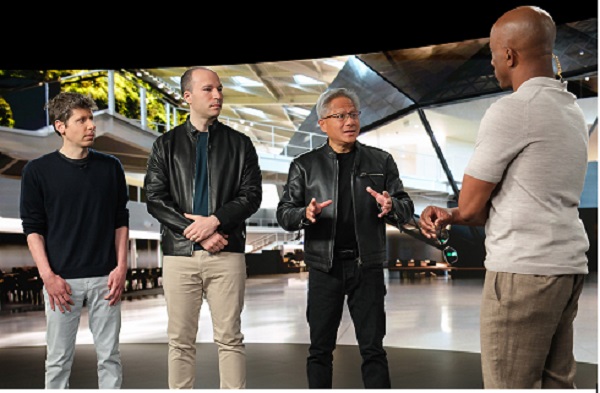.png)
Nvidia’s $5 Trillion Ascent Powered by Growth and Stock Splits
Nvidia’s march to $5 trillion shows how a well-timed stock split, backed by strong fundamentals and booming AI demand, can widen participation without altering real value.


Chandrika Soyantar is Founding Partner at Amarisa Capital. An investment banker with over three decades experience, she has managed the entire range of investment banking services
November 7, 2025 at 10:46 AM IST
A stock split is, at its core, simple arithmetic: the number of shares increases, the price per share falls, and the company’s overall market capitalisation remains unchanged. But in practice, a split can be much more than math. It can broaden ownership, deepen liquidity, and energize retail participation — provided it is timed well and backed by strong fundamentals.
Nvidia’s ascent from a $4 trillion market cap in mid-2024 to the current $5 trillion is powered both by its dominance in artificial intelligence and restrained use of stock splits. Since its 1999 IPO at $12, Nvidia has split its stock six times — in 2000, 2001, 2006, 2007, 2021 (a 4-for-1 split), and most recently a 10-for-1 split in June 2024.
Between 2007 and 2021, for 13 years, there were no splits — a deliberate pause during weak fundamentals and global financial uncertainty. Each subsequent split came at an inflection point — timed to strong price appreciation and business momentum. The June 2024 split made the stock more accessible to retail investors just as Nvidia consolidated its lead in AI computing, data-centre accelerators, and next-generation chip architecture.
Nvidia’s approach demonstrates that splits work best when a company’s fundamentals are robust and share price is high for retail investors. The split itself did not drive Nvidia’s success, but allowed more investors to join its growth story — a quiet synchronization of corporate and financial strategy.
New partnerships, such as its collaboration with Oracle on AI supercomputers and a $1 billion investment in Nokia to develop 6G technology, have expanded Nvidia’s reach. The company’s May-July results showed 56% year-on-year growth in data-centre revenue, while CEO Jensen Huang projected an additional $500 billion in AI chip orders. Investor enthusiasm surged in tandem with these fundamentals.
The June 2024 split—executed at a $4 trillion valuation—made shares more accessible to individual investors and reinforced Nvidia’s inclusion in the Dow Jones Industrial Average later that year.
The Structural Difference
In the US, a stock split adjusts share price. In India, it changes the face value——usually from ₹10 downward, but never below ₹1. When face value bottoms out, buybacks often serve as the alternative route , as Infosys chose once it hit ₹5, keeping balance-sheet discipline while rewarding shareholders.
This distinction is more cultural than regulatory. The US markets chase liquidity and participation. India values emphasis on prudence and calibrated reward.
An Indian Parallel
Indian companies — Infosys, Tata Steel, IRCTC, Bajaj Finance — too have reduced face value to make high-priced shares accessible and widen retail participation as retail investors become dominant. More recently it is Nestle India, with its price dropped down from about ₹27,150 to ₹2,660. Within a quarter, the number of individual shareholders surged by 151%, from 285,000 to over 714,000 — a vivid demonstration of how affordability transforms market participation.
Cautious optimism is required. In 2024, number of companies that split shares was 152, with nearly 88 trading below ₹10—a sign of herd behaviour, a tendency to chase optics rather than underlying solid fundamentals.
Not every company pursues splits. While having its low-priced B class shares for retail, Berkshire Hathaway, for its high-priced Class A shares for institutional investors and MRF Ltd. India, have chosen not to split. Price per share is less important than the quality of ownership it attracts. MRF India’s shares high share price restrains speculative trading. While most use splits to democratise ownership, these holdouts choose to preserve altitude to emphasise longevity and conviction.
Stock splits, bonuses, dividends, buybacks—each is an instrument in corporate finance. Knowing when to use is an art. Nvidia’s calibrated June 24 split propelling it to $4 trillion and then its march to $5 trillion illustrates how timing and fundamentals fuel substance. India’s blue-chips show that stock splits are not mere cosmetic.
A well-timed split invites more investors to join the growth journey, keeps trading active, and reinforces company’s market story — without spending cash.
Still splits are energy, not essence. The real value continues to flow from earnings, innovation, governance, and execution, and the quiet conviction that allows growth to compound.



